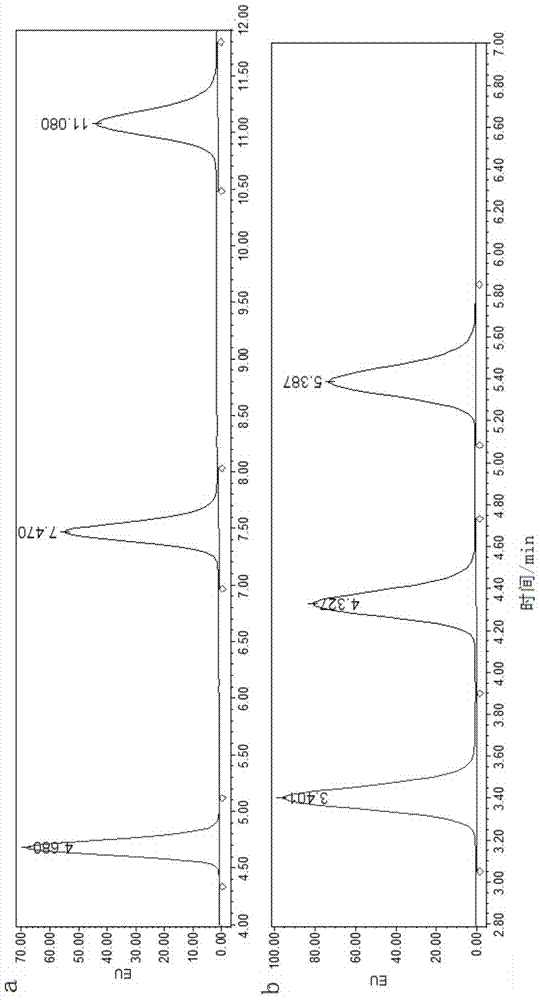Preparation method of activated carbon adsorption film and method for measuring bisphenol substances in wetland soil or sediment based on thin-film diffusion gradient technique
A technology of activated carbon adsorption and bisphenols, applied in the fields of environmental science and earth science, can solve the problems of narrow application range, poor elution effect, immature measurement technology, etc., and achieve the effect of large adsorption capacity, long shelf life and strong toughness
- Summary
- Abstract
- Description
- Claims
- Application Information
AI Technical Summary
Problems solved by technology
Method used
Image
Examples
Embodiment 1
[0046] combined with figure 1 with figure 2 , a method for preparing an activated carbon adsorption membrane and a method for measuring bisphenols in wetland soil or sediments based on gradient diffusion film technology in this embodiment, the adsorption membrane is an agar film with small activated carbon particles distributed on the surface, wherein the activated carbon particles The particle size is <50 μm. The activated carbon adsorption membrane of this embodiment can adsorb bisphenols, and is especially suitable for the adsorption and analysis of bisphenols in wetland soil or sediment.
[0047] After professional theoretical analysis and repeated tests, the inventors concluded that when using DGT technology to effectively measure bisphenols in wetland soil or sediments, it is not only necessary to select a suitable adsorbent, but also to select a suitable diffusion membrane and filter. membrane and eluent. Existing studies have shown that carbon-based materials have e...
Embodiment 2
[0070] The preparation steps of diffusion membrane and adsorption membrane in the present embodiment are the same as embodiment 1, the difference is: the mass ratio of activated carbon powder and pure water in step (b) is 8:100; In the step (c), activated carbon solution and agar solution The volume ratio is 1:4; step (d) cooling time is 30min.
[0071] In this embodiment, a method for measuring bisphenols in wetland soil or sediment based on gradient diffusion film technology, its steps are the same as in Example 1, except that the measurement object in step (3) is organically polluted Wetland red soil, the basic properties of the soil are as follows: pH is 4.0, iron oxide content is 18520mg / kg (dry weight), dissolved organic matter is 75mg / kg (dry weight), and the maximum field water holding capacity is 52%. The standing time in the laterite is 30h; The eluent in the step (4) is 10mL methanol, and the elution efficiency of BPA, BPB and BPF are respectively 56%, 96% and 35%; ...
Embodiment 3
[0073] The preparation steps of the diffusion membrane and the adsorption membrane in this embodiment are the same as in Example 1, except that the mass ratio of activated carbon powder to pure water in step (b) is 5:100; activated carbon solution and agar solution in step (c) The volume ratio is 1.5:4; step (d) cooling time is 120min.
[0074] A kind of method in this embodiment is based on gradient diffusion thin film technology to measure bisphenols in wetland soil or sediment, its step is the same as embodiment 3, difference is: the time of filling high-purity nitrogen in step (2) is 8h; The measurement object in the step (3) is wet land sandy soil, and the pH of soil is 7.5, and the content of iron oxide is 5080mg / kg (dry weight), and dissolved organic matter is 45mg / kg (dry weight), and maximum field water holding capacity is 37%; the placement time of the DGT device in the wetland red soil is 36h; the eluent in step (4) is the mixed solution of 9mL methanol and 1mL 0.5m...
PUM
| Property | Measurement | Unit |
|---|---|---|
| adsorption capacity | aaaaa | aaaaa |
| diameter | aaaaa | aaaaa |
| pore size | aaaaa | aaaaa |
Abstract
Description
Claims
Application Information
 Login to View More
Login to View More - R&D
- Intellectual Property
- Life Sciences
- Materials
- Tech Scout
- Unparalleled Data Quality
- Higher Quality Content
- 60% Fewer Hallucinations
Browse by: Latest US Patents, China's latest patents, Technical Efficacy Thesaurus, Application Domain, Technology Topic, Popular Technical Reports.
© 2025 PatSnap. All rights reserved.Legal|Privacy policy|Modern Slavery Act Transparency Statement|Sitemap|About US| Contact US: help@patsnap.com


